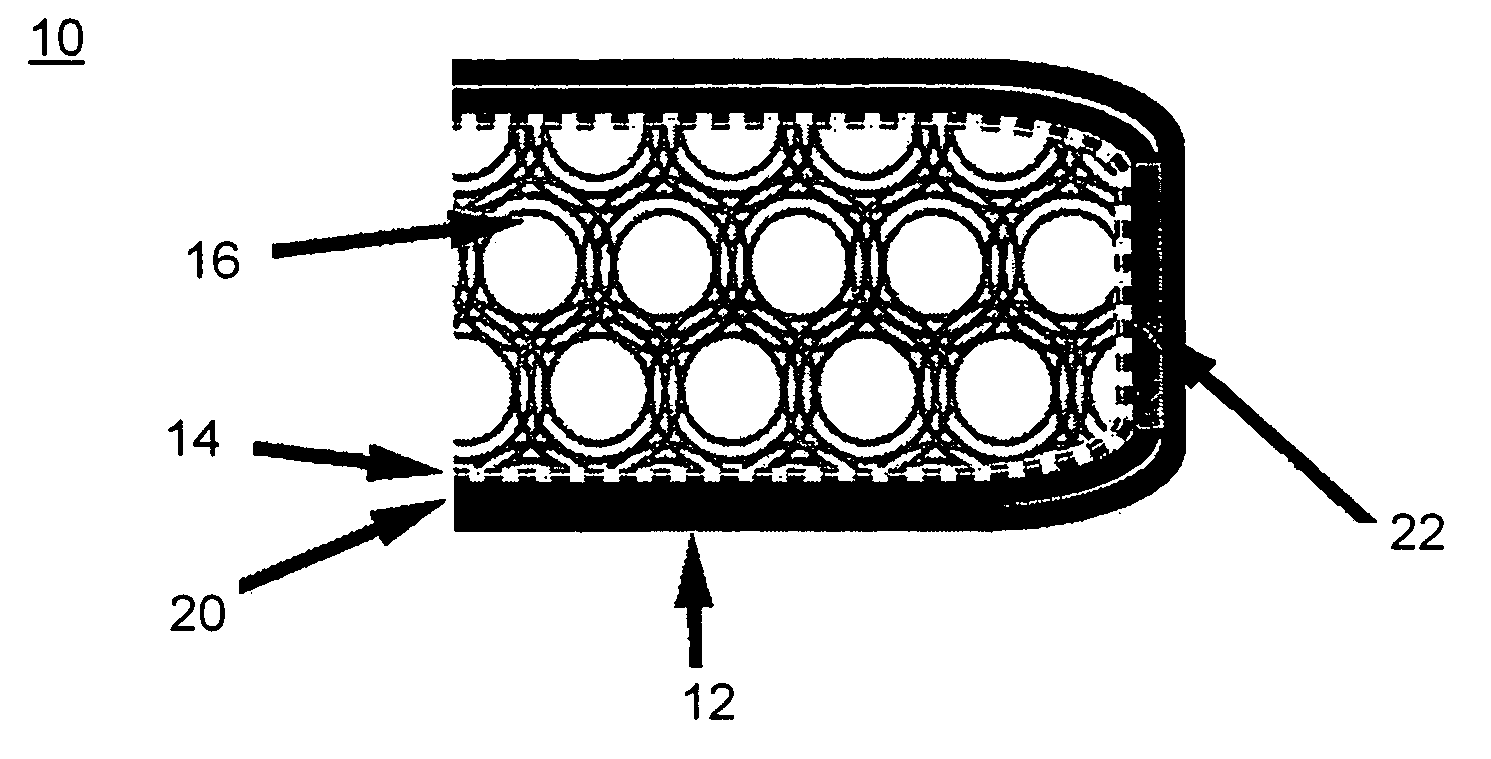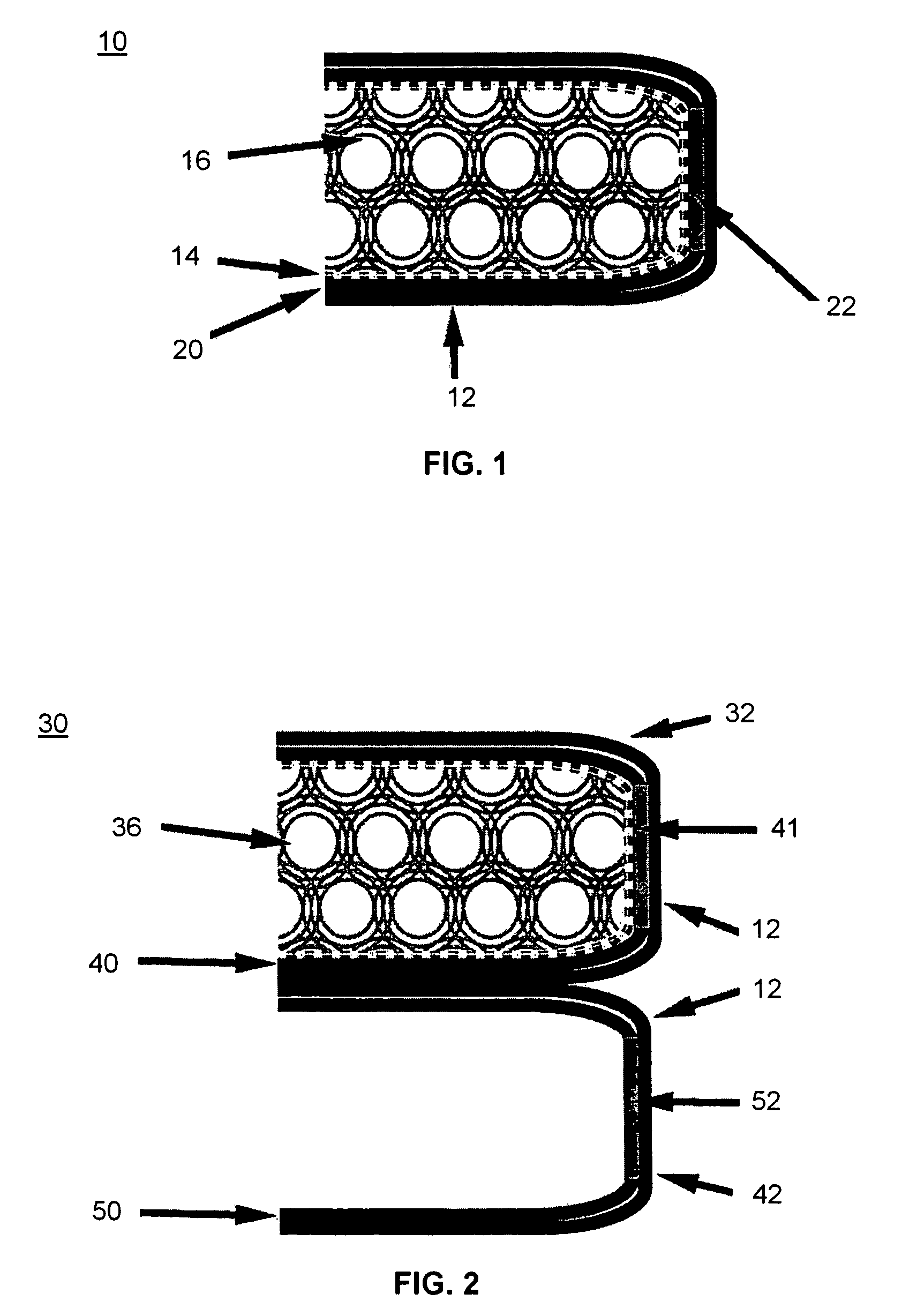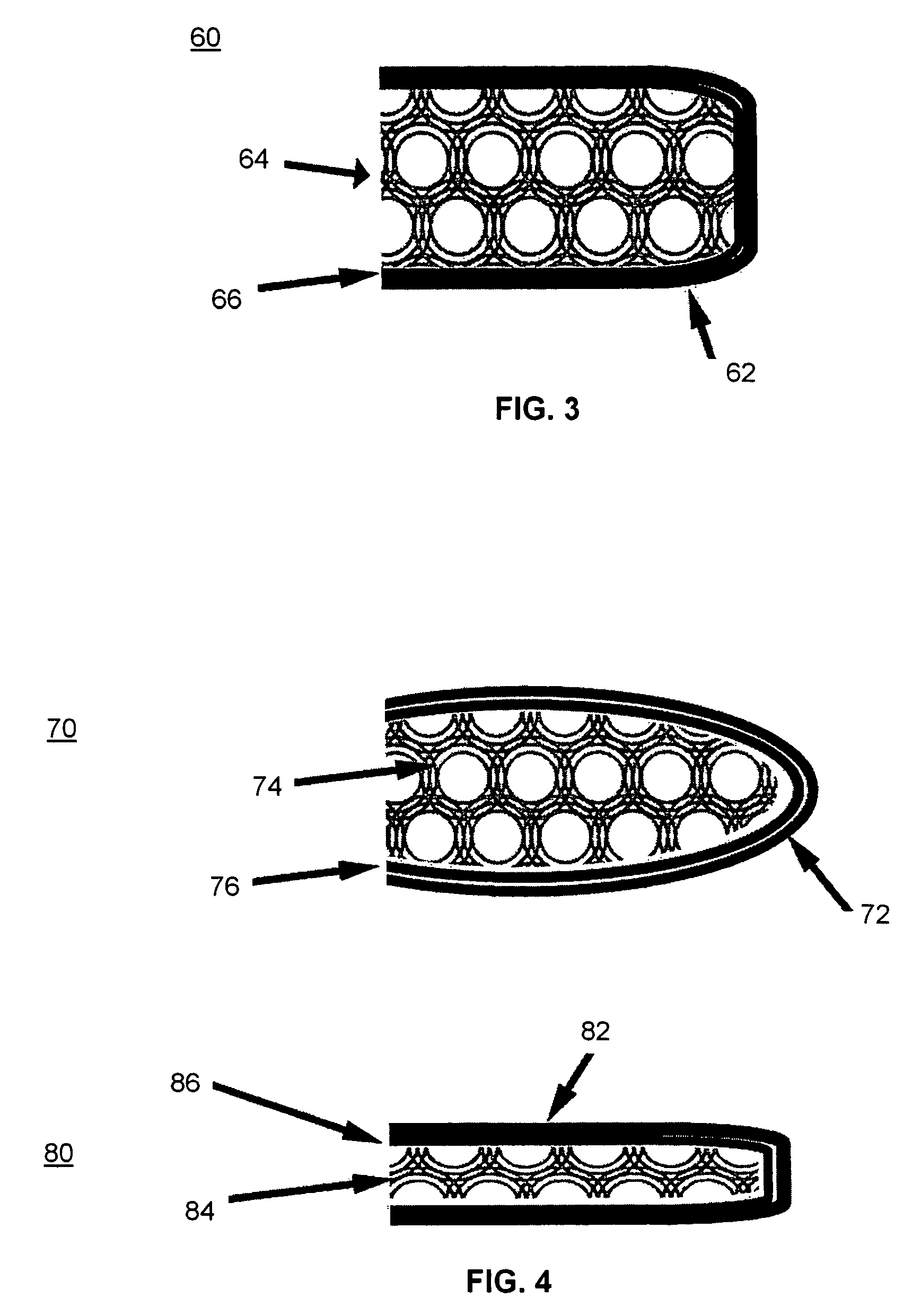Open flame resistant articles
a technology for open flames and articles, applied in the field of open flame resistant articles, can solve the problems of compromising the long-term protection from open flames, reacting with volatile and potentially deadly substances, and compromising the comfort of finished mattresses
- Summary
- Abstract
- Description
- Claims
- Application Information
AI Technical Summary
Benefits of technology
Problems solved by technology
Method used
Image
Examples
example 1
Fabric Manufacture
[0100]Knitted fire barrier fabrics were manufactured that reflected that traditional approach to fire barrier design using a fiber (modacrylic) known to have links to chlorine production and thus believed to cause the production of dioxins and furans during combustive activity, and that reflected the present invention by replacing the modacrylic content with a blend of totally chlorine free (TCF), inherently flame retardant viscose fiber obtained from Sateri Oy of Valkeakoski, Finland (FR Rayon Staple fiber) and Nylon—both of which were not believed to cause the production of dioxins and furans during combustive activity or production. The construction of these fabrics was a 1×1 rib knit using circular knitting technology. The composition of these fabric alternatives were as follows:
[0101]
Item #WeightConstructionCompositionBK 1000B-XX7.1 oz / lin yd1 × 1 Rib KnitBlend of Fiberglass#150101027Yarn, Modacrylic Yarnand Polyester YarnBK 38227.0 oz / lin yd1 × 1 Rib KnitBlen...
example 2
Results of Thermal Decomposition of Fabric
[0102]Knitted fire barrier fabrics as disclosed in Example 1 above, were submitted for independent laboratory testing under the ISO 5660-1 test standard. Twenty specimens of sizes 100×100 mm2 were cut from samples of the knit items identified as Style 1000B-XX and Style 3822 and the samples were burned in the cone calorimeter and the chemical compounds generated were analyzed by measuring their abundances in the exhaust duct of the measuring system. The irradiation level of the cone radiator was 50 kW / m2 and the duration of each test was 5 minutes.
[0103]The results of FTIR (Fourier transform infrared) spectrometry analysis on the selected fabric samples returned the following values:
[0104]
Peak Concentration (ppm) / Yield (grams of substanceAnalysisper kg fabric burned)CompoundTechniqueStyle 3822Style 1000B-XXHydrogen Chloride (HCl)FTIR2406Hydrogen Bromide (HBr)FTIR20Hydrogen Cyanide (HCN)FTIR166Ammonia (NH4)FTIR117Sulfur Dioxide (SO2)FTIR29Acr...
example 3
Full-Scale Open Flame Testing
Procedure
[0107]Mattresses including fire barrier fabrics according to the present invention were fabricated, and tested in accordance with TB 129. All instrumentation was zeroed, and calibrated prior to testing. The test specimen, after conditioning to 73° F. and 50% R.H., was placed on a steel frame, on a load cell platform along the far side of the test room (Configuration A). The specified propane burner was placed centrally and parallel to the bottom horizontal surface of the mattress 1 inch from the vertical side panel of the mattress. The computer data acquisition system was started, and then the burner was ignited and allowed to burn for 180 seconds. The test was continued until either all combustion ceased, or one hour passed.
[0108]Data recorded included: room smoke opacity; weight loss; smoke release rate (SRR); total smoke release (TSR); carbon monoxide concentration; heat release rate (HRR); total heat release (THR); ceiling temperature above ...
PUM
| Property | Measurement | Unit |
|---|---|---|
| Power | aaaaa | aaaaa |
| Power | aaaaa | aaaaa |
| Mass | aaaaa | aaaaa |
Abstract
Description
Claims
Application Information
 Login to View More
Login to View More - R&D
- Intellectual Property
- Life Sciences
- Materials
- Tech Scout
- Unparalleled Data Quality
- Higher Quality Content
- 60% Fewer Hallucinations
Browse by: Latest US Patents, China's latest patents, Technical Efficacy Thesaurus, Application Domain, Technology Topic, Popular Technical Reports.
© 2025 PatSnap. All rights reserved.Legal|Privacy policy|Modern Slavery Act Transparency Statement|Sitemap|About US| Contact US: help@patsnap.com



